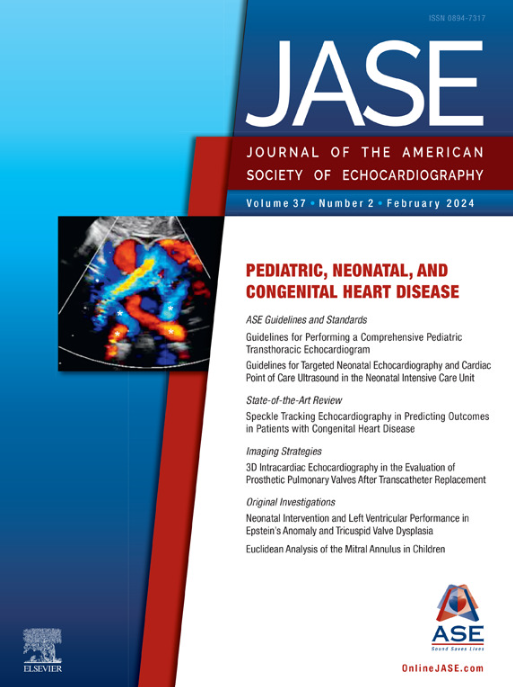The February issue of JASE includes, “Guidelines and Recommendations for Targeted Neonatal Echocardiography and Cardiac Point-of-Care Ultrasound in the Neonatal Intensive Care Unit: An Update from the American Society of Echocardiography.” Author Patrick J. McNamara, MD, FASE, remarks, “There are several modifications to the 2011 guidelines, which will enhance their generalizability across the world and support high quality Targeted Neonatal Echocardiography (TNE)-based neonatal hemodynamic care including increased flexibility around the required time in a pediatric echo lab, expanding the scope of TNE to include both symptom (e.g., hypotension, hypoxemia) and disease-based indications (e.g., hypoxemic ischemic encephalopathy, patent ductus arteriosus), recommending that a neonatologist with advanced TNE training may perform standard TNE as the first study in a patient with low index of suspicion of CHD to enable more timely access, and clarifying the scope of cardiac point-of-care ultrasound (cPOCUS) vs TNE. One of the crucial elements of the success of TNE and the establishment of Neonatal Hemodynamics programs has been the close collaboration with pediatric echo labs. We anticipate that the updated guidelines will enable more institutions to establish either TNE or cPOCUS programs, foster hypothesis generating and testing TNE-based research, and aid the establishment of new collaborations between neonatologists with a hemodynamic focus and pediatric cardiologists interested in non-CHD neonatology disease.”
Readers can look forward to a second guideline on performing a comprehensive pediatric TTE, as well as a state-of-the-art review on the role of speckle-tracking echo in predicting mortality and morbidity in patients with congenital heart disease. This issue includes an imaging strategies paper on the use of 3D intracardiac echo during transcatheter pulmonary valve replacement, featuring the authors’ experience in patients with congenital heart disease who underwent this procedure. Additionally, three clinical investigations tackle echocardiographic assessment of LV function in extremely preterm infants, echocardiographic assessment of LV function after neonatal intervention for tricuspid valve dysplasia, and exploratory modeling of mitral annulus dynamics by 3D echo in children. Two editorials accompany these reports, and one letter to the editor on the educational framework for trainees in neonatal hemodynamics concludes this issue.
Dr. Pellikka’s editorial recaps all the content of this issue with its focus on pediatric, neonatal, and congenital heart disease echo. Dr. Eidem’s President’s Message highlights the diverse range of educational activities ASE offers – from the robust Learning Hub catalog to the live course options – there is something for everyone in pursuit of furthering their echo knowledge. Please see the February ASE Education Calendar for a listing of educational opportunities far and wide.

